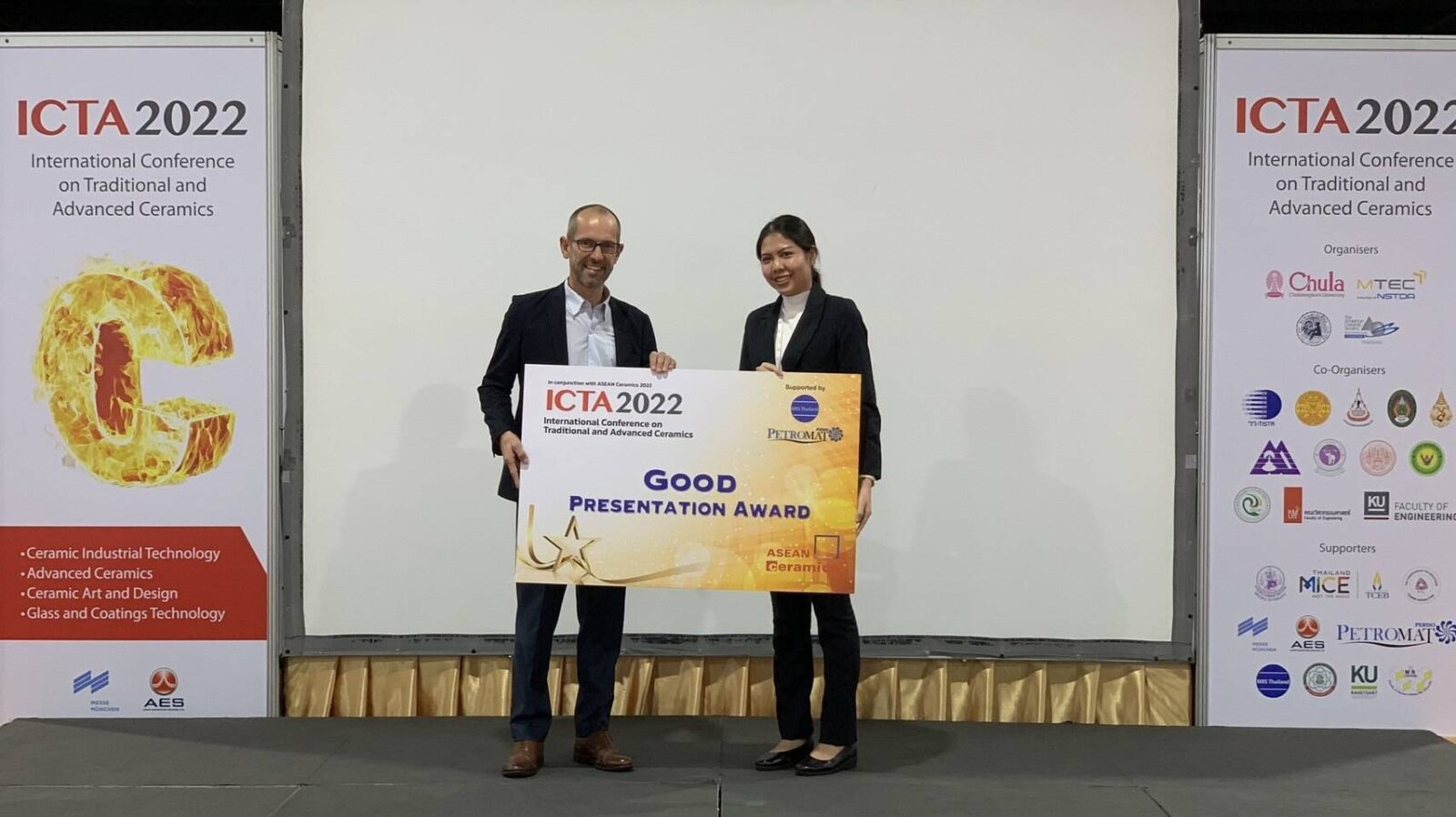
รางวัล
ระดับนานาชาติ
ผลงานที่ได้รับรางวัล: One-pot Synthesis of High Specific Surface Area Mesoporous Silicas from a Low-cost Sodium Silicate
นักวิจัยเจ้าของผลงาน:
นางศุภมาส ด่านวิทยากุล หัวหน้าคณะทำงานวิจัย
นางสาวสมัญญา สงวนพรรค คณะทำงานวิจัย
นางสาววารุณี บวรเกียรติแก้ว คณะทำงานวิจัย
นายอรินทรเชษฐ์ ศิรินันทวิทยา คณะทำงานวิจัย
นางสาวอภิญญา อะภัย คณะทำงานวิจัย ( Presenter )
ชื่อรางวัลและเกียรติยศที่ได้รับ: Good Presentation Award
หน่วยงานที่ให้รางวัลและเกียรติยศ: Center of Excellence on Petrochemical and Materials Technology (PETROMAT) ในงาน The International Conference on Traditional and Advanced Ceramics (ICTA)
ผู้มอบ: Mr. David Aitken Managing Director
พิธีมอบรางวัลและเกียรติยศ: Good Presentation Award
สถานที่: Impact Muang Thong Thani Hall4
วันที่: 30 พฤษศิกายน – 2 ธันวาคม 2565
ที่มาและความสำคัญของรางวัลและเกียรติยศ
รางวัล Good Presentation Award งานนิทรรศการ Asean ceramics 2022 The International Conference on Traditional and Advanced Ceramics (ICTA) จาก Poster เรื่อง One-pot Synthesis of High Specific Surface Area Mesoporous Silicas from a Low-cost Sodium Silicate
รายละเอียดโครงการ/ผลงานที่ได้รับรางวัลและเกียรติยศ
Advanced Ceramics : One-pot Synthesis of High Specific Surface Area Mesoporous Silicas from a Low-cost Sodium Silicate Mesoporous silicas (MPSs) were synthesized by a low-cost industrial grade sodium silicate via hydrolysis and condensation reactions. In this study, effects of templates (CTAB, DTAB, P123 and F127) and stirring times (2, 4, 8, 18 hours) on the characteristics of synthesized MPS were studied. The synthesis method was carried out by the dissolution of template in 0.2 M hydrochloric acid solution under continuously stirring system, followed by the addition of diluted sodium silicate solution, acting as a Si-precursor. The mixture was then continuously stirred for the desired time. White particles of MPS were observed during the condensation process and filtered by the vacuum filtration system after the completion of stirring time. The filtrate was dried at 80˚C for overnight and calcined at 550˚C for 3 hours in an atmosphere. The calcined samples were examined surface morphology by a field emission scanning electron microscope (FE-SEM, SU-5000, Hitachi), while the specific surface area and pore size characteristics were analyzed by a nitrogen gas adsorption technique (Micromeritics, ASAP 2460) with BET equation and BJH theory. All synthesized MPS samples using cationic surfactants (DTAB and CTAB) had the specific surface area above 1000 m2.g-1, while by using triblock copolymer (P-123 and F-127) templates exhibited 700-800 m2.g-1 specific surface areas. It was observed that the stirring



